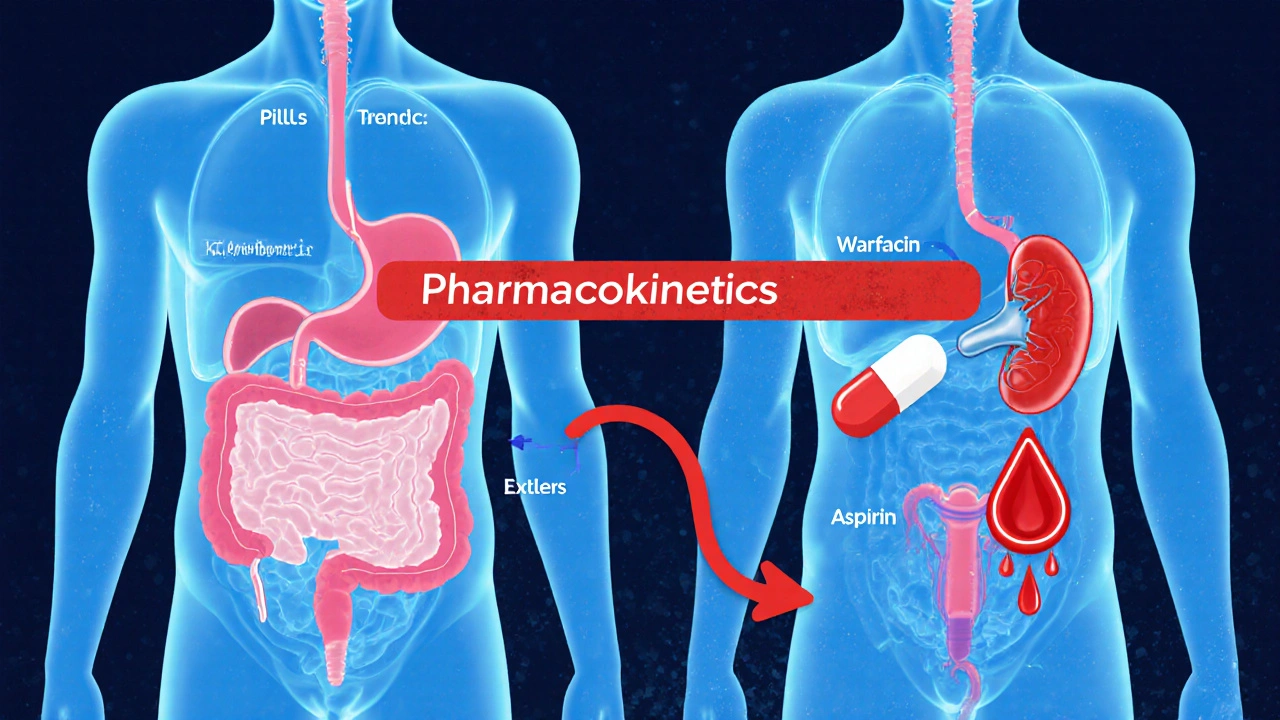Learn how pharmacokinetic and pharmacodynamic drug interactions affect your meds-why some change drug levels, others change your body's response, and how to stay safe on multiple medications.
When you take more than one medication, your body doesn’t treat them like separate events—it tries to process them all at once. This is where pharmacokinetic interactions, how drugs affect each other’s absorption, distribution, metabolism, and excretion in the body. Also known as drug-drug interactions, it happens long before you feel any effect—right at the molecular level inside your liver, kidneys, and gut. These aren’t rare accidents. They’re predictable, measurable, and often avoidable. Think of your liver as a busy factory. One drug might be the main product, but if another drug shows up and clogs the machinery, the whole process slows down—or worse, overloads.
Take drug metabolism, the chemical breakdown of medications, mostly by liver enzymes like CYP3A4 and CYP2D6. If you’re on a statin for cholesterol and start taking grapefruit juice, that juice blocks the enzyme that breaks down the statin. Suddenly, you have too much drug in your blood. Same thing happens with antibiotics like clarithromycin or antifungals like ketoconazole—they can shut down metabolism pathways and turn normal doses into dangerous ones. On the flip side, some drugs, like St. John’s wort, speed up metabolism so fast your meds get flushed out before they can work. This isn’t theory—it’s why people on blood thinners, birth control, or antidepressants suddenly feel off after adding a new supplement or over-the-counter pill.
drug absorption, how quickly and fully a drug enters your bloodstream from the gut. Antacids can stop your thyroid meds or antibiotics from being absorbed. Iron pills and calcium supplements can bind to other drugs like tetracycline or levothyroxine and carry them out of your body unused. Even your food matters—high-fat meals can make some drugs work faster, while others need an empty stomach. And it’s not just pills. Your kidneys handle drug excretion. If you’re on a diuretic and take NSAIDs like ibuprofen, you’re putting extra strain on your kidneys. That’s why people on multiple meds for heart failure, arthritis, or high blood pressure need to watch these details closely.
What you’ll find below isn’t just a list of drug names. It’s a collection of real cases where these interactions made a difference—like how anastrozole’s effect on hormones changes with certain foods, or how propranolol’s impact on anxiety can shift if you’re also taking something that affects liver enzymes. You’ll see how acitretin and liver health are tied together, why leflunomide dosing needs to account for other meds, and how even something as simple as birth control can be weakened by antibiotics or herbal teas. These aren’t hypotheticals. They’re stories from people who took their meds as directed—and still ran into trouble because no one told them about the hidden chemistry.
Understanding pharmacokinetic interactions doesn’t mean you need to memorize enzyme names. It means knowing when to ask: Could this new pill, supplement, or even my morning coffee be changing how my other meds work? The answers are out there—and they’re written in the same language as the posts below.

Learn how pharmacokinetic and pharmacodynamic drug interactions affect your meds-why some change drug levels, others change your body's response, and how to stay safe on multiple medications.